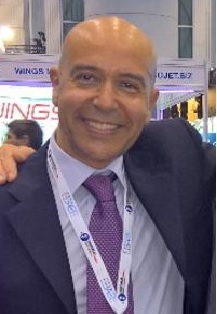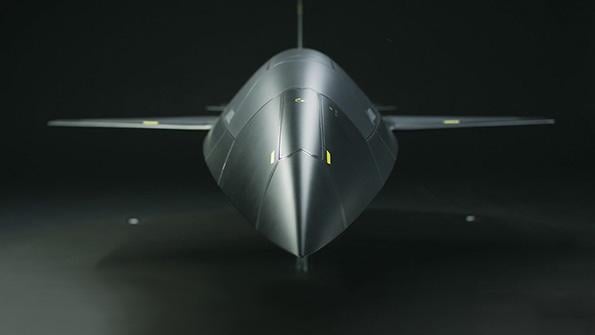Can Upstart Anduril Land The CCA Market?
Details
More Products & Services
Products & Services
Home - Aviation Group Marketing
Aviation Week Network
120 data points on over 156,000 commercial and business aviation aircraft, including military transports. Discover the most trustworthy resource for the complete aircraft history, plus ad hoc reports, month-over-month trend analysis and details on expected deliveries through 2050.
Aerospace | Aviation Week Network
Aviation Week Network
https://aviationweek.com/themes/custom/particle/dist/app-drupal/assets/awn-logo.svg
People

Andrea Rossi Prudente
Aviation Week Network

Becca Balmes
Aviation Week Network

Belinda Tan
Aviation Week Network

Brian Everstine
Aviation Week Network
Editor

Eddie Krankowski
Aviation Week Network
Assistant Manager, Tradeshows

erving dockery
Aviation Week Network

Lisa Tan
Aviation Week Network
Senior Marketing Manager

Mark Thomas
Aviation Week Network
Description
Compared to the wing, sensors and other major features, the landing gear likely will be an afterthought on the day Anduril Industries rolls out the first Fury, a jet-powered autonomous fighter selected by the U.S. Air Force to compete in the first round of the Collaborative Combat Aircraft program.
But the design and manufacturing approach to the Fury's landing gear offers a revealing glimpse into the decision-making process that a seven-year-old, Silicon Valley-backed company brings to a new kind of combat aircraft.Landing gear decision opens window into design approachUSAF leaders are intrigued but are waiting for results
As a safety-critical component, landing gear design and manufacturing often are delegated to a small club of specialized suppliers by defense companies. But Anduril decided to design and build the gear in-house.
“While it sounds a bit zany, the better thing to do is start from scratch and build cheaper, commercially sourced, mass-producible landing gear that is actually a better fit for the platform it is going on,” Anduril Chief Strategy Officer Christian Brose tells Aviation Week.
Anduril's sudden rise as a new player with a $14 billion valuation in the exclusive air dominance market rests as much on a few sweeping, strategic decisions as on hundreds of smaller tactical choices, including how to build the landing gear for one of the Air Force's first two Collaborative Combat Aircraft (CCA) prototypes.
So far, the Costa Mesa, California-based company's fast-moving and fresh approach has worked. In April, the Air Force selected Anduril and General Atomics Aeronautical Systems Inc. (GA-ASI) to build the Fury and a variant of the XQ-67, respectively, for the first increment of the CCA.
In the process, the Air Force passed over bids by three aerospace giants—Boeing, Lockheed Martin and Northrop Grumman—for the first contract of a loosely planned family of autonomous partners for crewed combat aircraft.
Anduril's unusual approach to the Fury's landing gear has caught the attention of Air Force leaders.
“That's going to be a really interesting thing, to see how they succeed at that,” Andrew Hunter, assistant secretary of the Air Force for acquisition, technology and logistics, said on The Merge podcast in August. “We are not going to dictate to them how they do that. They're going to figure it out, and they're going to succeed or fail, and it's probably a key benchmark for success—how they succeed or fail at that.”
As Hunter's comments suggest, Air Force leaders regard Anduril's design choices with an equal mixture of hope and concern.
“Maybe they'll break 1,000 landing gears before they get the design exactly right,” Hunter added. “But if they do that, and if they get it right, that's probably going to be a really good landing gear. That might be better than what we would have generated using the traditional defense process.”
An Air Force official declined a request for elaboration. “Mr. Hunter used this as a general example. We aren't planning to provide additional information on this topic,” the official said.
Internally, Anduril executives are satisfied that their landing gear design for the Fury uncrewed aircraft system (UAS) complies with Air Force certification requirements, even if their approach differs from the traditional process.
“We have landing gear ready to go on the airplane, and we've done the testing on it that the Air Force is looking for,” says Andrew Van Timmeren, Anduril's director of air dominance systems.
For a traditional aircraft, landing gear represents one of a handful of never-fail components, as any fault constitutes a crash risk with no backup system. But the CCA program is seeking to build a different type of aircraft. The Air Force wants the aircraft to be reusable, but not necessarily at the same level of other large UAS, such as the Northrop Grumman RQ-4 Global Hawk. Conversely, the Air Force also wants each to be affordable enough to be lost on its first mission, but preferably not at the same rate as a disposable system, such as a cruise missile. The design requirement falls somewhere in between, defining a new category for attritable systems.
That distinction informs a different approach to the CCA design across the defense industry. Anduril's competitor, for example, unveiled a separate cost-saving approach. GA-ASI built the XQ-67 under an Air Force Research Laboratory contract with a common chassis. This approach adopts a common structural keel and avionics system, along with a modular, mission-specific approach to the design and placement of the engines and wings.
But Anduril's approach seeks to maximize the savings from simplifying the design enough for the CCA's supply chain to bypass higher-priced and capacity-constrained specialists in the aerospace industry.
The philosophy aims to “reduce the complexity of everything to the greatest extent possible so that it can be manufactured easily and cheaply by the largest number of people,” Brose says. “That, I think, is ultimately how we're going to do this differently, how we're going to bring costs down and still meet the requirements of the program.”
Another feature of Anduril's approach is reuse. Although founded only in 2017, the company has built up and acquired a portfolio of capabilities that can be applied to the CCA design. The company now builds launched effects systems for the Army, loitering and reusable drone interceptors for other military customers, and a wide range of avionics and sensors. Some of those internal capabilities are finding their way into the Fury design.
“One easy place is just the software baseline, so basically, either a vehicle management system [or an] autopilot system,” says Jason Levin, Anduril's senior vice president of the air dominance and strike division. “We're also trying to get a lot of reuse on specific components, so avionics that we develop, actuators and things like this.”
In February, Anduril revealed the new Iris family of airborne imaging and targeting sensors, featuring computational pixel imager technology to identify and track objects autonomously. Although not developed specifically for Fury, the sensor payload could become a candidate for the CCA market.
“Iris is capable of going on a lot of different platforms, but we would obviously agree that a CCA application would make a lot of sense,” Brose says.
Mission systems, such as sensors and weapons, remain a source of controversy in the CCA market. A CCA equipped with fighter-like sensors and survivability systems could be more effective but bring higher costs. As the price tag for each CCA rises, the aircraft become less attritable.
“If you're assuming that traditional mission systems from manned aircraft are going to get ported over to a CCA, you blow your cost out of the water,” Brose says. “Once you get into sensors, [communications] and weapons, [the CCA] actually creates a market for a totally different class of those mission systems that hasn't existed before, because we've never had something like the CCA that requires low-cost mission systems.”
There are limits to Anduril's approach to supply chain decisions. Seeking to break into the market for loitering munitions, the company developed its own turbojets. But the Fury will be powered by the Williams International FJ44-4, a 3,600-lb.-thrust engine developed for business jets, such as the Cessna Citation CJ4 and Pilatus PC-24. The Air Force's plan to field the first increment of the CCA family drove Anduril to select a certified off-the-shelf option.
Anduril's business strategy also is intended to be self-limiting. An attritable CCA fits the company's model perfectly. New concepts for uncrewed air refueling and mobility aircraft might be possible as well. An advanced crewed fighter or bomber, however, falls beyond Anduril's capabilities now and in the future.
“We're never going to work in those types of programs,” Brose says. “I actually think our process of working through something like CCA was a process of realization that this is actually more of an Anduril-shaped program than it is something that traditional industry is well-tooled to go after.”
But the design and manufacturing approach to the Fury's landing gear offers a revealing glimpse into the decision-making process that a seven-year-old, Silicon Valley-backed company brings to a new kind of combat aircraft.Landing gear decision opens window into design approachUSAF leaders are intrigued but are waiting for results
As a safety-critical component, landing gear design and manufacturing often are delegated to a small club of specialized suppliers by defense companies. But Anduril decided to design and build the gear in-house.
“While it sounds a bit zany, the better thing to do is start from scratch and build cheaper, commercially sourced, mass-producible landing gear that is actually a better fit for the platform it is going on,” Anduril Chief Strategy Officer Christian Brose tells Aviation Week.
Anduril's sudden rise as a new player with a $14 billion valuation in the exclusive air dominance market rests as much on a few sweeping, strategic decisions as on hundreds of smaller tactical choices, including how to build the landing gear for one of the Air Force's first two Collaborative Combat Aircraft (CCA) prototypes.
So far, the Costa Mesa, California-based company's fast-moving and fresh approach has worked. In April, the Air Force selected Anduril and General Atomics Aeronautical Systems Inc. (GA-ASI) to build the Fury and a variant of the XQ-67, respectively, for the first increment of the CCA.
In the process, the Air Force passed over bids by three aerospace giants—Boeing, Lockheed Martin and Northrop Grumman—for the first contract of a loosely planned family of autonomous partners for crewed combat aircraft.
Anduril's unusual approach to the Fury's landing gear has caught the attention of Air Force leaders.
“That's going to be a really interesting thing, to see how they succeed at that,” Andrew Hunter, assistant secretary of the Air Force for acquisition, technology and logistics, said on The Merge podcast in August. “We are not going to dictate to them how they do that. They're going to figure it out, and they're going to succeed or fail, and it's probably a key benchmark for success—how they succeed or fail at that.”
As Hunter's comments suggest, Air Force leaders regard Anduril's design choices with an equal mixture of hope and concern.
“Maybe they'll break 1,000 landing gears before they get the design exactly right,” Hunter added. “But if they do that, and if they get it right, that's probably going to be a really good landing gear. That might be better than what we would have generated using the traditional defense process.”
An Air Force official declined a request for elaboration. “Mr. Hunter used this as a general example. We aren't planning to provide additional information on this topic,” the official said.
Internally, Anduril executives are satisfied that their landing gear design for the Fury uncrewed aircraft system (UAS) complies with Air Force certification requirements, even if their approach differs from the traditional process.
“We have landing gear ready to go on the airplane, and we've done the testing on it that the Air Force is looking for,” says Andrew Van Timmeren, Anduril's director of air dominance systems.
For a traditional aircraft, landing gear represents one of a handful of never-fail components, as any fault constitutes a crash risk with no backup system. But the CCA program is seeking to build a different type of aircraft. The Air Force wants the aircraft to be reusable, but not necessarily at the same level of other large UAS, such as the Northrop Grumman RQ-4 Global Hawk. Conversely, the Air Force also wants each to be affordable enough to be lost on its first mission, but preferably not at the same rate as a disposable system, such as a cruise missile. The design requirement falls somewhere in between, defining a new category for attritable systems.
That distinction informs a different approach to the CCA design across the defense industry. Anduril's competitor, for example, unveiled a separate cost-saving approach. GA-ASI built the XQ-67 under an Air Force Research Laboratory contract with a common chassis. This approach adopts a common structural keel and avionics system, along with a modular, mission-specific approach to the design and placement of the engines and wings.
But Anduril's approach seeks to maximize the savings from simplifying the design enough for the CCA's supply chain to bypass higher-priced and capacity-constrained specialists in the aerospace industry.
The philosophy aims to “reduce the complexity of everything to the greatest extent possible so that it can be manufactured easily and cheaply by the largest number of people,” Brose says. “That, I think, is ultimately how we're going to do this differently, how we're going to bring costs down and still meet the requirements of the program.”
Another feature of Anduril's approach is reuse. Although founded only in 2017, the company has built up and acquired a portfolio of capabilities that can be applied to the CCA design. The company now builds launched effects systems for the Army, loitering and reusable drone interceptors for other military customers, and a wide range of avionics and sensors. Some of those internal capabilities are finding their way into the Fury design.
“One easy place is just the software baseline, so basically, either a vehicle management system [or an] autopilot system,” says Jason Levin, Anduril's senior vice president of the air dominance and strike division. “We're also trying to get a lot of reuse on specific components, so avionics that we develop, actuators and things like this.”
In February, Anduril revealed the new Iris family of airborne imaging and targeting sensors, featuring computational pixel imager technology to identify and track objects autonomously. Although not developed specifically for Fury, the sensor payload could become a candidate for the CCA market.
“Iris is capable of going on a lot of different platforms, but we would obviously agree that a CCA application would make a lot of sense,” Brose says.
Mission systems, such as sensors and weapons, remain a source of controversy in the CCA market. A CCA equipped with fighter-like sensors and survivability systems could be more effective but bring higher costs. As the price tag for each CCA rises, the aircraft become less attritable.
“If you're assuming that traditional mission systems from manned aircraft are going to get ported over to a CCA, you blow your cost out of the water,” Brose says. “Once you get into sensors, [communications] and weapons, [the CCA] actually creates a market for a totally different class of those mission systems that hasn't existed before, because we've never had something like the CCA that requires low-cost mission systems.”
There are limits to Anduril's approach to supply chain decisions. Seeking to break into the market for loitering munitions, the company developed its own turbojets. But the Fury will be powered by the Williams International FJ44-4, a 3,600-lb.-thrust engine developed for business jets, such as the Cessna Citation CJ4 and Pilatus PC-24. The Air Force's plan to field the first increment of the CCA family drove Anduril to select a certified off-the-shelf option.
Anduril's business strategy also is intended to be self-limiting. An attritable CCA fits the company's model perfectly. New concepts for uncrewed air refueling and mobility aircraft might be possible as well. An advanced crewed fighter or bomber, however, falls beyond Anduril's capabilities now and in the future.
“We're never going to work in those types of programs,” Brose says. “I actually think our process of working through something like CCA was a process of realization that this is actually more of an Anduril-shaped program than it is something that traditional industry is well-tooled to go after.”

Share
Recent Chats
Share via email
Future: handle WhatsApp here
Future: handle LinkedIn here
Future: handle Twitter here
SUBMENU HERE
Share via Chat
Copy Link

 Digital Directory
Digital Directory